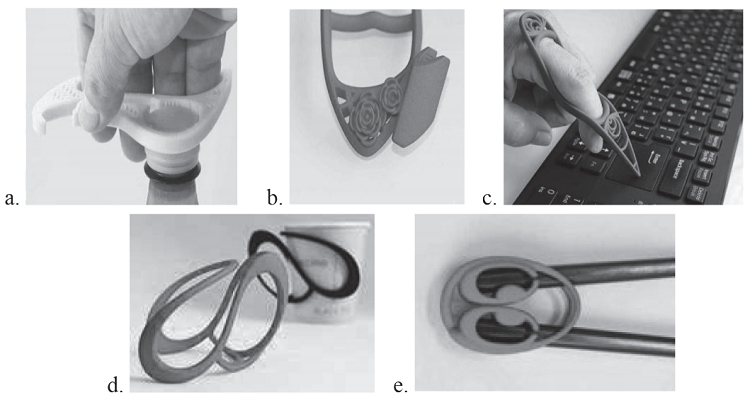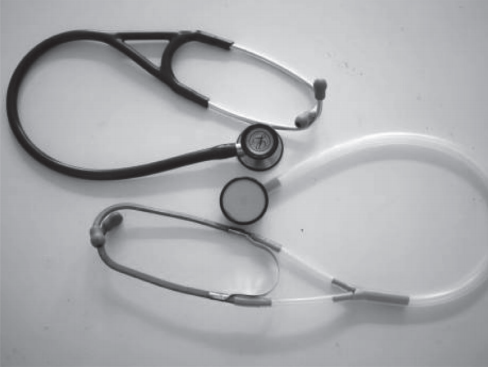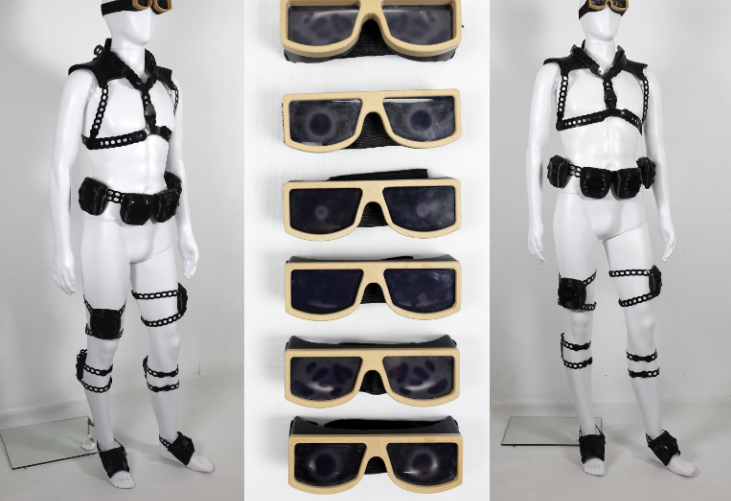3D printing has many applications in the healthcare industry, as it allows users to fabricate complex, cost-effective, patient-specific devices on-demand. In the same vein, 3D bioprinting is important for applications in tissue engineering and replacement organs. Helena Dodziuk, a researcher at the Institute of Physical Chemistry of the Polish Academy of Sciences (PAN), explained why in her paper, “Application of 3D printing in healthcare of the elderly.”
“Its great advantage is personalization that guarantees better adjustment of a device, an implant or prosthesis to the patient’s body, thus fostering the patient recovery,” Dodziuk writes.
She explains that most of the time, 3D printed healthcare applications are not meant to be age-specific, but are frequently used by older adults. In her paper, she reviews many ways that 3D printing is used in the medical field for applications that often apply to the elderly.
“The present and future applications of 3DP in healthcare are enormous and bring several benefits for doctors and, also older, patients,” she wrote.
The hearing aids market was the first to be taken over almost entirely by 3D printing – in fact, only 2% of hearing aids are currently not fabricated with additive manufacturing.
“Their traditional manual and labor intensive manufacturing was transformed into fast automated patient-oriented industry with much more than 10 million devices used worldwide,” Dodziuk states.
While there are many younger people who wear hearing aids, I think we can agree that we mostly think of them as devices for those who are older.
Another healthcare industry that 3D printing is currently dominating is the field of dentistry. Many elderly people use dentures, and using 3D printing to fabricate them can help bring material costs down.
“By combining oral scanning, CAD/CAM design and 3D printing, dental labs can accurately and rapidly produce crowns, bridges, plaster/stone models, and a range of orthodontic appliances such as surgical guides and aligners. A 3D scan, taken instead of uncomfortable impressions, is later transformed into a 3D model and 3D printed,” she wrote. “The model can be used to create a full range of orthodontic appliances, delivery and positioning trays, aligners and retainers.”
3D printing can be used to make implants and replacements for all sorts of body parts, such as the jaw, pelvis, trachea, spine, hip, vertebrae, and skull. Dodziuk states that acetabular hip implants are the most popular 3D printed implants.
“Two approaches are applied in manufacturing hip replacements using 3D printing: personalized 3D printed prostheses on the basis of CT and/or MRI of the patient precisely for his/her size or 3D printing of prostheses in large variety of sizes much larger than that used in the standard procedure.”
In fact, over 100,000 hip prostheses were 3D printed by Arcam AB between 2014-2018. The technology can create more accurate prostheses that are better adjusted to a patient’s body than traditional methods of manufacturing. Dodziuk mentioned the case of a 71-year-old woman who had six hip replacements. She walked with crutches for years and was nearly confined to a wheelchair due to the pain, until British surgeons implanted a 3D printed hip joint, which was held in place with her own stem cells.
“Age is the major risk factor for osteoarthritis of the knee and knee arthroplasty surgery is helpful in end-stage disease. 3DP has several applications in this domain: cartilage, implants as well as realignments.”
Due to the more accurate implant positioning it affords, 3D printing can help when used in unicompartmental knee arthroplasty and knee realignment, the latter of which is used to prevent patients from having to undergo a total knee replacement. Again, these types of procedures are most often performed on elderly patients.
“To carry the realignment, doctors create totally custom-made surgical guides or even joints on the basis of the CT scans of the patients, using 3D printing and perfectly fitting the morphology of the patient.”
Virtual Surgical Planning, or VSP, is fairly obvious to explain – doctors use 3D organ models, made using CT and MRI scans, to help visualize and plan the surgery, and communicate with patients more effectively, which can lead to improved precision and less time in the OR; “thus, contributing to faster patients recovery.”
“It is not age-specific and the most spectacular applications of VSP consisted probably in multidisciplinary oncologic chest wall resection and reconstruction,” Dodziuk notes.
“With world population getting older and a simultaneous rapid development of 3DP technology it is becoming less expensive to contribute to a significant growth of 3D printed medical implant market.”
3D printing is often used to make medical devices “specifically adapted for elderly,” as well as sterile surgical instruments like clamps, forceps, hemostats, scalpel handles, and stethoscopes. The technology is especially helpful as it can help manufacturers create these instruments in a much smaller size, which allows doctors to “operate precisely on tiny areas without causing unnecessary damage to the patient.”
Moving on, the technology is perfect for manufacturing medical devices for elderly cancer patients, like drug-loaded implants, dosimetry phantoms, and boluses. Additionally, ZMorph and faculty from the University of Life Sciences in Poznań made a 3D printed Age Simulator, “a device that should help designers of furniture, public transport vehicles, homes, clothes or cars to better understand the needs and limitations faced by older people.”
“The simulator is a kind of 3D printed suit developed on the basis of a careful analysis of the movement of a 75 year old woman who performed daily activities such as walking, bending or reaching objects from a shelf. The suit is accompanied by a set of glasses mimicking vision problems of older people.”
Designer Tatsuo Ishibashi made practical, inexpensive 3D printed tools that can help elderly and disabled people complete everyday activities, like holding chopsticks, writing, and opening bottles.

Figure 4. (a) bottle opener, (b) writing assist holder tool, (c) finger input device, (d) cup holder, (e) chopsticks helper. Created by Tatsuo Ishibashi, Mizu Laboratory.
Another example of 3D printing being used to help the elderly is making food that tastes and looks good for those who have trouble swallowing, also known as dysphagia.
“Chewing and swallowing difficulties can result from stroke or dementia. The illness is characterized by the inability of the larynx to close properly while swallowing. Because of this condition 60% of nursing home residents eat liquefied, mostly unappealing and nutritionally inadequate food,” Dodziuk wrote.
The technology can help make strained and pureed food look like its original shape, with the same texture and extra health benefits.
In 2015, seizure drug Spritam became the first FDA-approved 3D printed drug. The pill, developed by Aprecia Pharmaceuticals, has a porous, layered structure that allows it to suck in liquid so it collapses to “form an easily absorbable suspension.” Conventional methods of manufacturing could not make this kind of structure. But besides Spritam’s high solubility, 3D printing can help fabricate drugs in specific dosages, like multi-drug combinations or controlled release, for the elderly and children.
3D bioprinting is the last healthcare application Dodziuk discusses in her paper. She writes that, “to my best knowledge, the only commercialized device involving bioprinting is FDA approved ExVive model of human liver tissue for in vitro testing of drug toxicity.” With an ultimate goal of 3D printing whole organs, the technology has also been used to fabricate bones, cornea, heart, kidney, ligament, and tendon tissues.
Dodziuk mentions two more important devices that can be 3D printed to help the elderly – tools to facilitate better communication between caregivers and care-receivers, and educational objects, like medical models, that can show caregivers how to perform therapy actions.
Discuss this and other 3D printing topics at 3DPrintBoard.com or share your thoughts below.
Subscribe to Our Email Newsletter
Stay up-to-date on all the latest news from the 3D printing industry and receive information and offers from third party vendors.
You May Also Like
Blue Laser Firm NUBURU Explores Strategic Alternatives Amid NYSE Compliance Challenges
In a strategic move reflecting the current macroeconomic landscape, NUBURU, Inc. (NYSE American: BURU), a pioneer in industrial blue laser technology, has announced its decision to explore a wide array...
Flexible Wireless Temperature Sensor Made with 3D Printing
Researchers from the University of Glasgow, University of Southampton, and Loughborough University have developed an innovative flexible temperature sensor utilizing microwaves and 3D printing technology. As detailed in an article...
3D Printing Laser Maker NUBURU Faces NYSE American Compliance Challenge
NUBURU (NYSE American: BURU), known for its innovative high-power and high-brightness industrial blue laser technology, has received a non-compliance notice from the NYSE American, formerly the American Stock Exchange (AMEX)....
3D Printing Resilience: the Case of Fiber Lasers
Since at least 2020, additive manufacturing (AM) has become more and more synonymous with the concept of supply chain resilience. In 2024, there is almost guaranteed to be a striking...




































